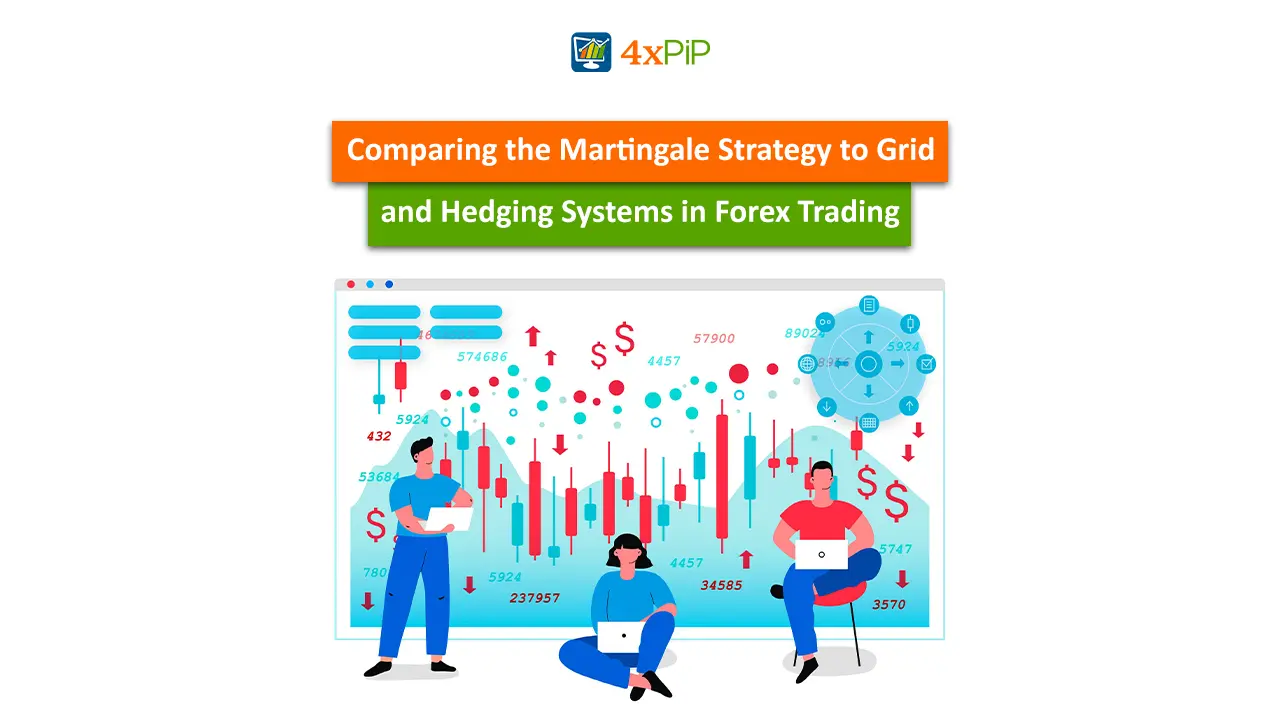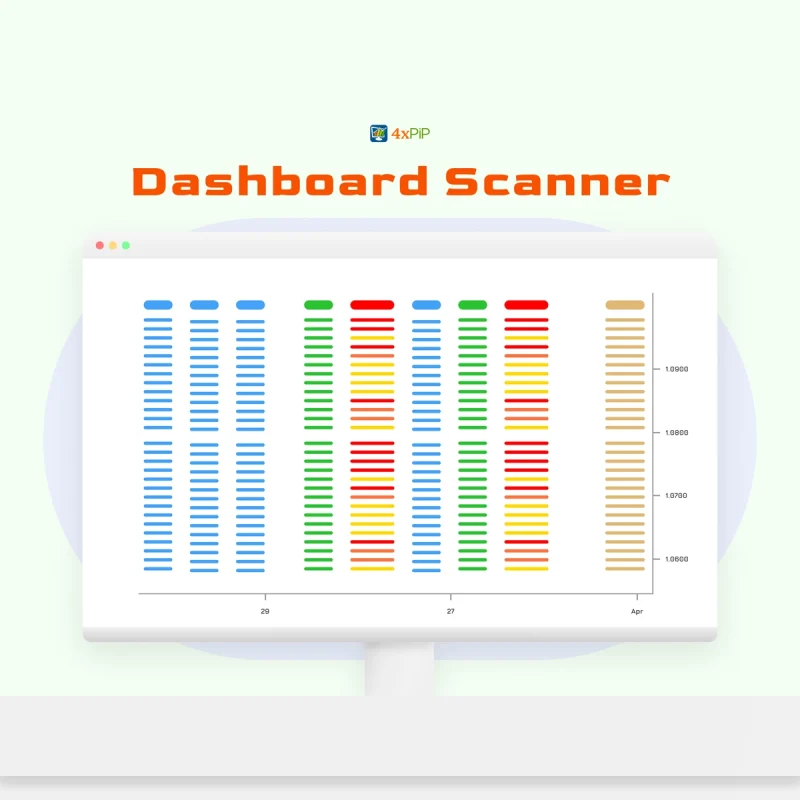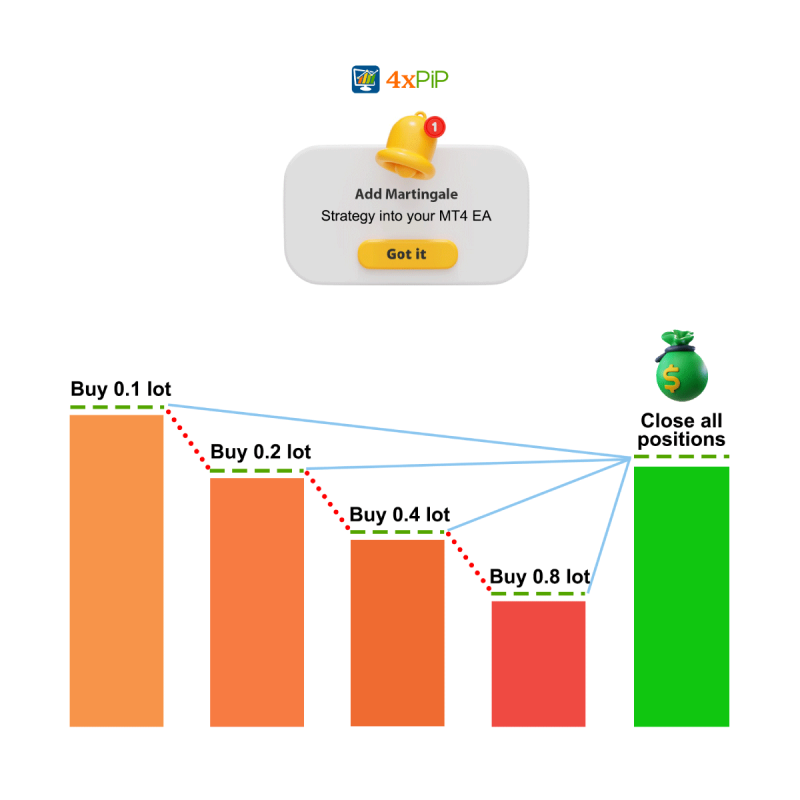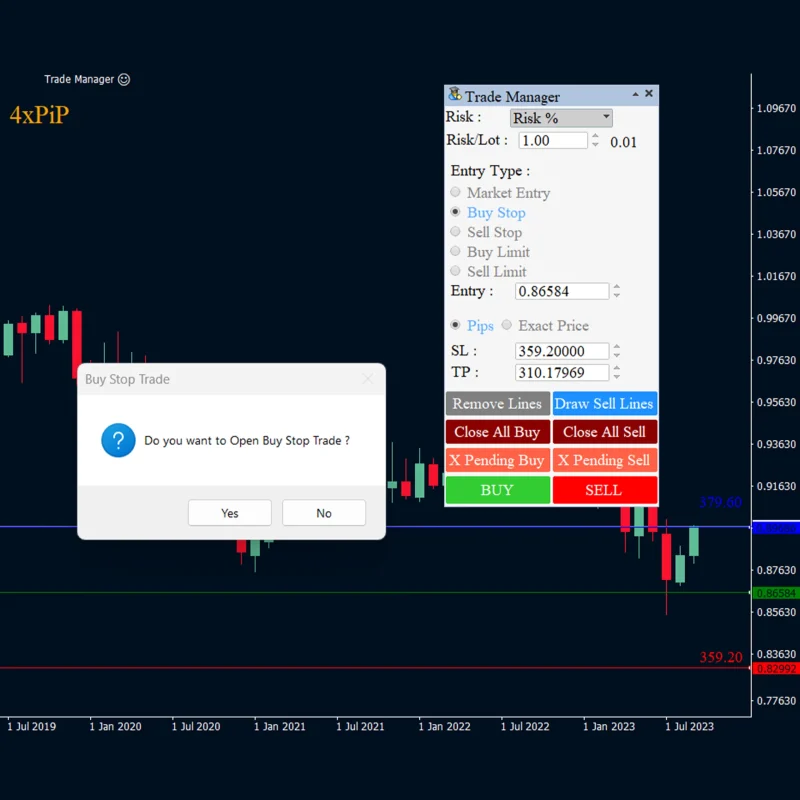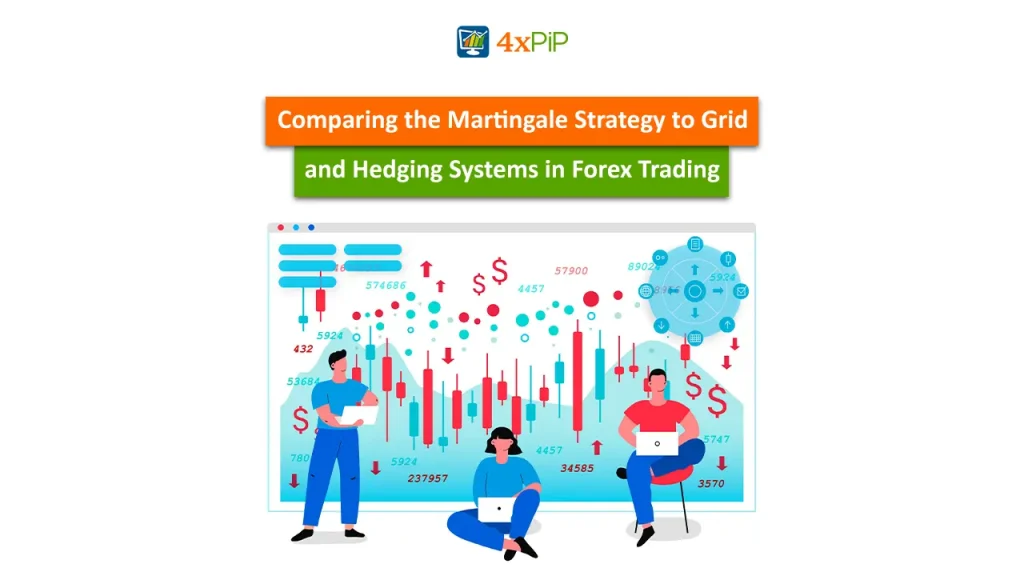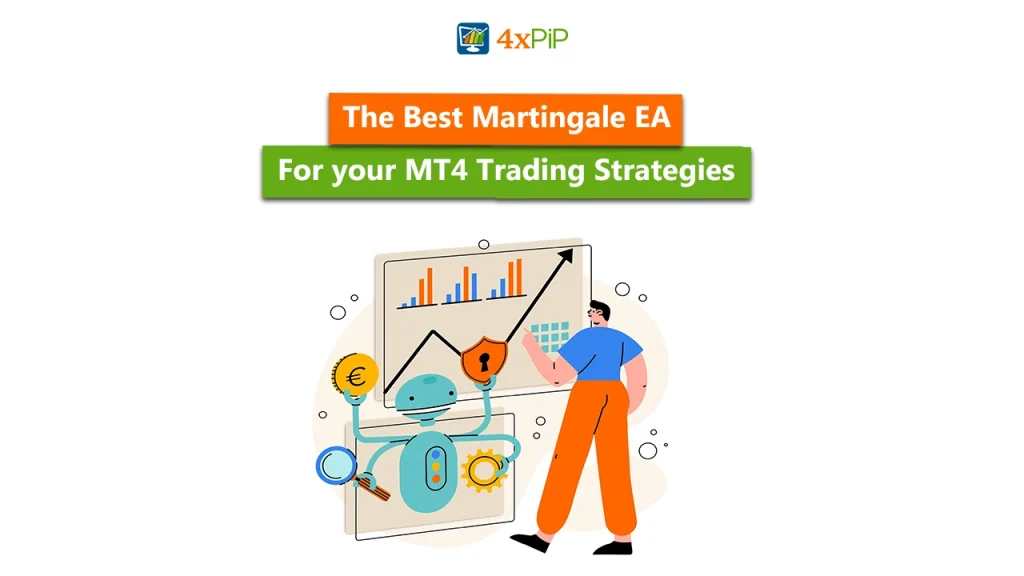Position management systems are the foundation of disciplined trading in Forex. Among the most discussed and widely implemented methods are the Martingale, Grid, and Hedging strategies, each designed to balance drawdowns, recover losses, and maintain equity flow under volatile market conditions. These systems can be applied manually or automated through Expert Advisors (EAs) on platforms like MetaTrader 4 (MT4) and MetaTrader 5 (MT5), giving traders the ability to scale and structure their trade execution with mathematical precision.
This article examines these three systems from a technical and logical standpoint, focusing on how each method handles risk, reward, and capital exposure. The goal is not to favor one approach but to clarify how they differ in structure and intent. For instance, our Forex Martingale EA demonstrates how systematic position scaling can be used for recovery and profitability under controlled parameters. Understanding such frameworks helps traders choose strategies that align with their risk profile and trading style rather than chasing profit through guesswork.
The Core Logic of Martingale, Grid, and Hedging Systems

Each of these position management systems operates on a distinct trade-structuring logic. The Martingale strategy increases position size after every losing trade, commonly by a fixed lot multiplier (e.g., 0.1 → 0.2 → 0.4 → 0.8). The purpose is mathematical recovery: once a winning trade occurs, it offsets all prior losses and secures a net gain. The Grid strategy, in contrast, spaces buy and sell orders at defined pip intervals (“steps”) without depending on trade direction, aiming to capture price movement within volatility ranges. Meanwhile, Hedging systems open offsetting positions on the same or correlated pairs to limit drawdowns or lock in profit during uncertain market phases.
While all three methods target loss recovery and volatility exploitation, their internal logic diverges significantly. Martingale relies on compounding position size to recover drawdown; Grid depends on spacing and order accumulation; Hedging uses position offsetting for balance. In practice, our Martingale Strategy Forex trading approach at 4xPip refines this logic into a controlled structure using centralized take profit levels, lot management automation, and counter trade recovery mechanisms. This system allows traders to adjust inputs, define profit modes, and execute trades mathematically, transforming complex manual risk management into precise algorithmic execution on MetaTrader.
Capital Allocation and Risk Exposure in Each Strategy
The Martingale strategy scales exposure exponentially, every losing position triggers a larger subsequent trade. This compounding structure allows faster recovery but also accelerates margin consumption and drawdown depth if market reversals delay. In contrast, a Grid system distributes exposure across multiple price intervals, creating a smoother equity curve by spreading capital through systematic buy and sell layers. Hedging, on the other hand, functions as a neutralizer: when uncertainty rises, offsetting positions are opened to cap losses temporarily without increasing position size. The difference lies in control, Martingale pushes recovery through calculated aggression, while Grid and Hedging rely on diversification and balance to manage volatility risk.
Our Martingale Strategy Forex Expert Advisor employs a centralized take-profit system, lot multiplier control, and auto-adjusted stop loss/take profit, allowing traders to expand recovery potential without uncontrolled leverage escalation. This precise automation ensures that every lot adjustment, counter trade, or grid expansion operates within logical capital parameters, helping users maintain consistent margin health. The efficiency of allocation defines whether a system survives extended drawdowns, and that’s exactly where our engineered automation proves its edge, measurable, and adaptive to both high and low liquidity environments.
Trade Frequency, Market Conditions, and Execution Behavior
Each of these systems performs best under specific market dynamics. The Martingale strategy thrives in ranging markets, where price oscillation allows frequent trade recovery through lot scaling. The Grid system also benefits from such range-bound environments but with diversified order spacing, making it more adaptable to short bursts of volatility. Hedging systems, by contrast, show strength in highly volatile or trending markets, where position offsets provide a cushion against unpredictable moves. The difference lies in frequency, Martingale executes more frequently in both directions as losses trigger recovery trades, while Grid activates sequential orders at defined pip steps. In volatile sessions, both can experience rapid accumulation of orders, demanding stable margin and precise execution control.
4xPip’s Martingale EA is optimized for these shifting conditions. The Expert Advisor operates continuously on MetaTrader (MT4/MT5), using a time filter, auto-adjusted stop loss and take profit, and centralized take-profit management to handle market speed and execution timing effectively. It also compensates for spread impact and slippage through automated recalculations of lot multipliers and trade spacing, maintaining profit consistency even during high volatility or widening spreads. Because execution precision defines profitability in algorithmic trading, our system ensures that each trade, from entry to closure, aligns with market liquidity and technical parameters, delivering consistency where manual execution often fails.
Drawdown Management and Recovery Mechanisms
The Martingale strategy seeks recovery by increasing trade size after each loss, an approach that allows accumulated smaller losses to be offset by a single profitable closure. As each position’s lot size multiplies, the average entry price shifts closer to current price action, enabling faster breakeven once price reverses. The Grid system, on the other hand, layers trades at predefined intervals, spreading recovery across multiple partial closures instead of relying on a single large position. Meanwhile, Hedging systems use temporary offsetting positions to balance exposure, limiting drawdown expansion until a dominant direction reemerges. In terms of recovery probability, Martingale tends to achieve faster recoveries in consolidating markets but at the cost of higher margin exposure, while Grid and Hedging systems extend recovery duration but with smoother equity performance.
The 4xPip Martingale Strategy Forex Trading EA integrates powerful drawdown control features, including lot multiplier customization, centralized take profit, and counter-trade recovery logic. The EA automatically adjusts lot sizes through its Lot Multiplier function, maintaining calculated exposure while aiming for a profitable exit through grouped closures. Its Centralized Takeprofit system ensures that every trade cycle ends in net profit, minimizing prolonged equity dips. This precise management approach keeps the account equity curve more stable, even when recovery phases extend under volatile conditions. By combining Grid methodology with Martingale scaling logic, our system recovers losses with precision, delivering consistent results that align with disciplined risk management rather than relying on blind compounding.
Practical Constraints and Broker Considerations
Every automated trading system operates within the limits defined by a trader’s broker and account structure. Leverage, margin requirements, and stop-out levels directly shape how Martingale, Grid, and Hedging systems behave in live execution. Martingale systems demand wider margin availability since position size compounds with each loss. When leverage is low, recovery chains may terminate prematurely, resulting in unrealized losses or stop-outs. Grid strategies distribute exposure across several smaller trades, reducing immediate margin pressure but increasing cumulative equity usage over time. Hedging systems, particularly on brokers that allow simultaneous buy and sell positions, can stabilize margin fluctuation, but under FIFO or no-hedge environments, those protective offsets become invalid. In short, broker-side mechanics can determine whether a recovery model functions smoothly or collapses under capital strain.
We’ve designed our Martingale Strategy EA with these constraints in mind. Our system works with any broker, any pair, and any timeframe, giving traders flexibility regardless of account type or regulatory limitations. Features such as stop-out percentage control, lot-multiplier customization, and centralized take profit ensure the EA adapts to both low-leverage and high-margin setups. During volatile or news-driven sessions, where spread widening and liquidity gaps distort expected order spacing, our EA’s auto-adjustment of SL/TP dynamically recalibrates risk levels and trade spacing to maintain consistency. This balance between performance and compliance makes our approach viable across varying broker conditions, without compromising execution quality or drawdown management.
Comparative Insights and Strategic Applications
Martingale, Grid, and Hedging systems each offer unique trade-offs in consistency, capital demand, and adaptability. Martingale strategy Forex trading, as implemented by 4xPip, provides high recovery potential and precise trade execution, but requires careful lot sizing and sufficient margin to handle compounded positions. Grid strategies excel in capturing market swings across multiple entries with moderate capital per trade, while Hedging offers protective offsets during volatility but depends on broker permissions. Understanding these distinctions helps us align system choice with risk tolerance, account size, and desired automation style.
Our Martingale EA integrates features like centralized take profit, lot multiplier settings, and auto-adjustment of SL/TP, allowing traders to customize risk and performance. For optimal results, we emphasize backtesting, continuous monitoring, and iterative adjustments to align strategy parameters with live market conditions. By analyzing historical data and refining settings, traders can hybridize systems or adjust automation logic to balance growth potential with drawdown management, ensuring the account equity curve remains as smooth and stable as possible.
Summary
Position management strategies like Martingale, Grid, and Hedging form the backbone of disciplined Forex trading. Each system has a unique approach to handling drawdowns, risk, and capital exposure: Martingale scales positions to recover losses, Grid spreads trades across defined intervals, and Hedging offsets positions to balance volatility. Understanding these differences is important for traders aiming to match their strategy with market conditions, account size, and risk tolerance. Platforms like MT4 and MT5 allow automation of these methods through Expert Advisors (EAs), and 4xPip’s Martingale Strategy EA demonstrates how precise automation, including lot multiplier control, centralized take profit, and recovery mechanisms, can transform these theoretical frameworks into practical, reliable trading tools.
4xPip Email Address: [email protected]
4xPip Telegram: https://t.me/pip_4x
4xPip Whatsapp: https://api.whatsapp.com/send/?phone=18382131588
FAQs
- What is the main difference between Martingale, Grid, and Hedging systems?
Martingale scales positions after losses, Grid layers trades at set intervals, and Hedging offsets positions to limit risk. Each targets drawdown recovery differently. - Which platforms support automated trading for these strategies?
MT4 and MT5 allow full automation via Expert Advisors, while TradingView can visualize strategies but requires custom scripts for execution. - How does capital allocation differ between these systems?
Martingale increases exposure exponentially, Grid spreads risk across trades, and Hedging maintains balance with offsetting positions. - When does Martingale perform best?
In ranging or consolidating markets where price oscillation allows frequent recovery through position scaling. - How does Grid strategy manage drawdowns?
By layering buy and sell orders across price intervals, Grid spreads risk and captures movements gradually rather than relying on one large position. - Can Hedging reduce losses in volatile markets?
Yes. By opening offsetting positions, Hedging caps exposure during uncertain market moves, though broker rules can limit this approach. - Why is execution precision important in automated systems?
Incorrect lot sizing, timing delays, or spread impacts can undermine profitability and increase drawdown. Reliable EAs ensure consistent trade execution. - How do brokers affect these strategies?
Leverage, margin requirements, stop-out rules, and FIFO or no-hedge policies influence whether recovery models work as intended. - Can traders combine these systems effectively?
Yes. Hybrid approaches allow users to balance high recovery potential, capital efficiency, and protective offsets to match their risk tolerance. - How does 4xPip’s Martingale EA improve strategy execution?
It integrates lot multiplier control, centralized take profit, auto-adjusted SL/TP, and recovery logic, turning theoretical models into reliable, real-world automation across MT4/MT5.

